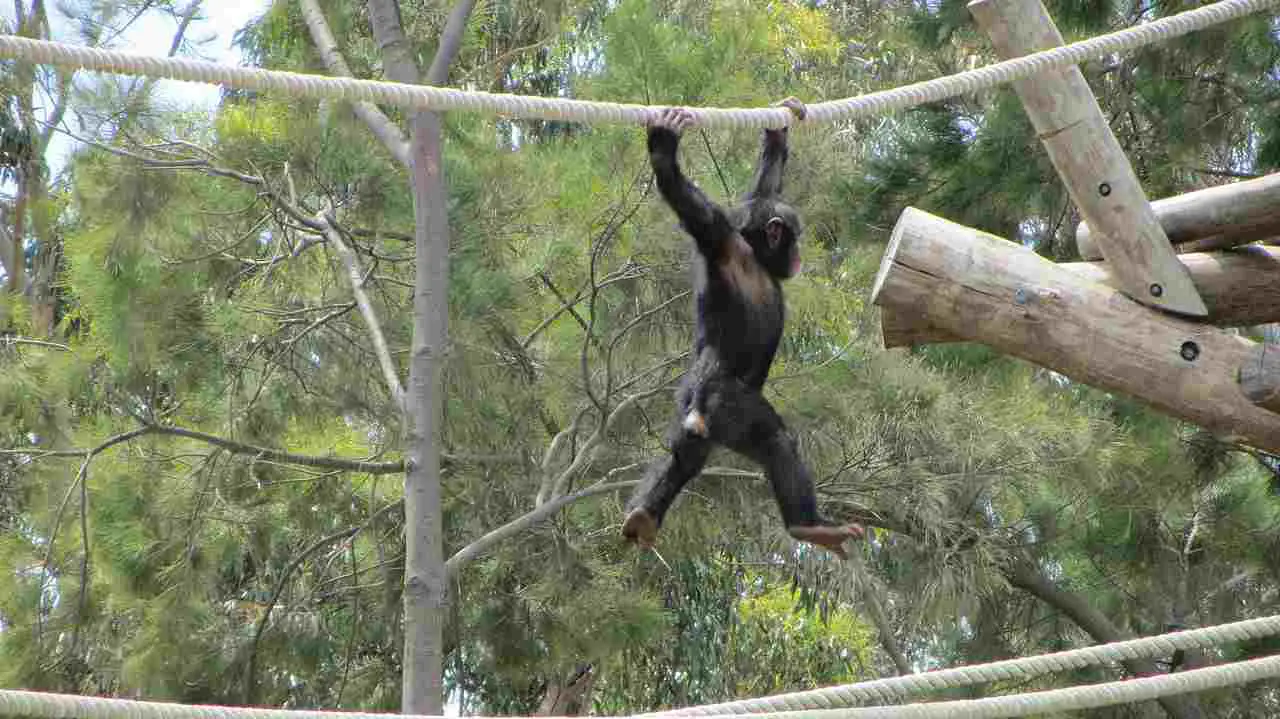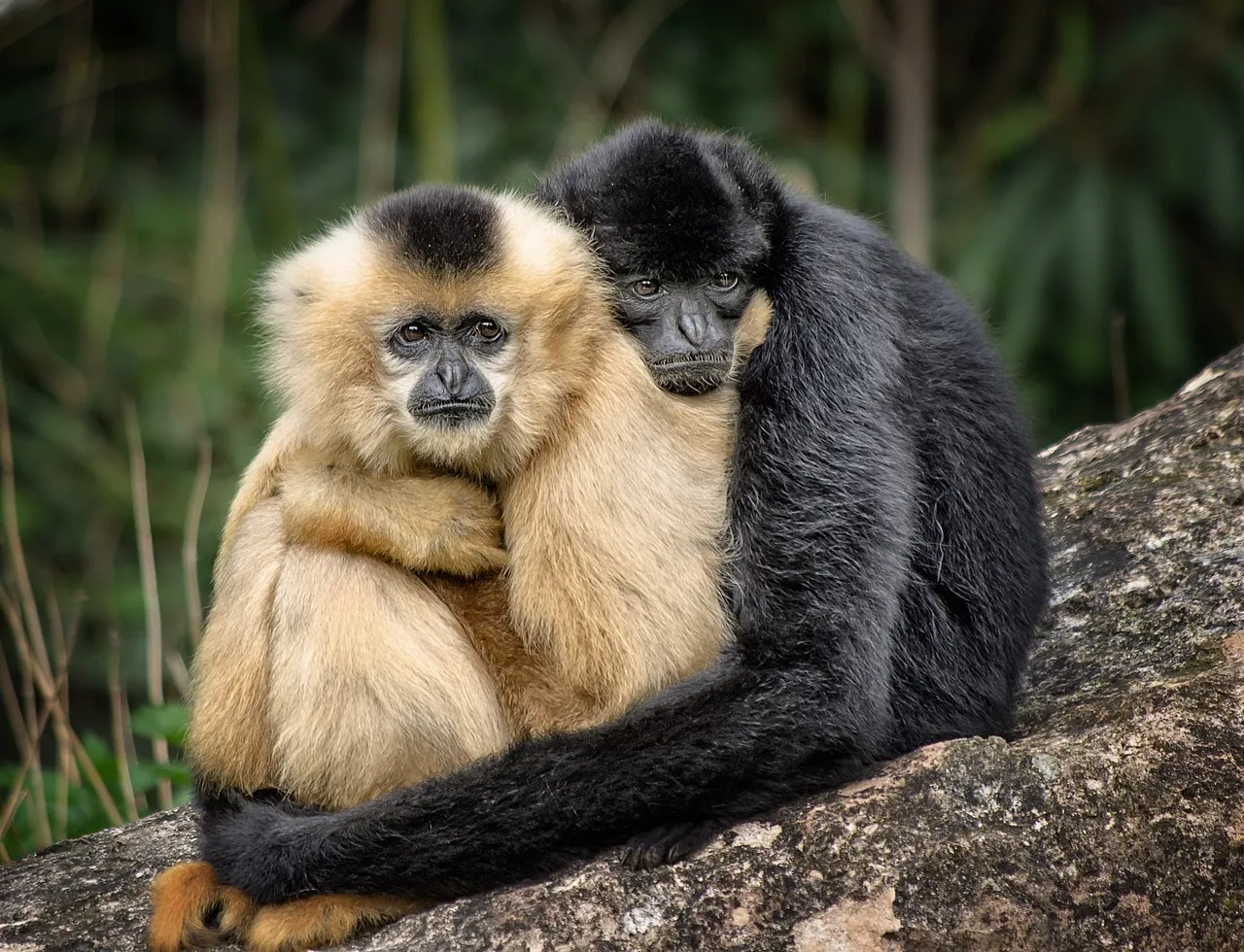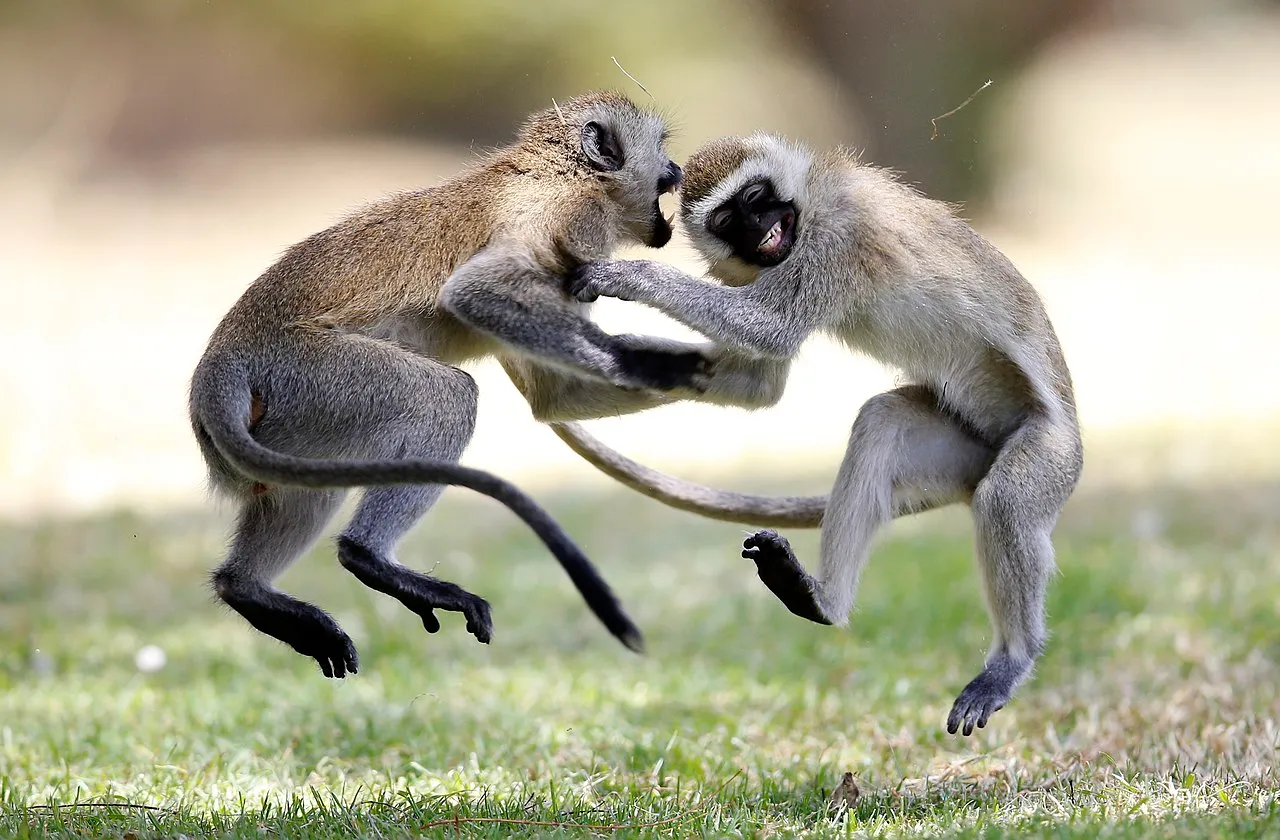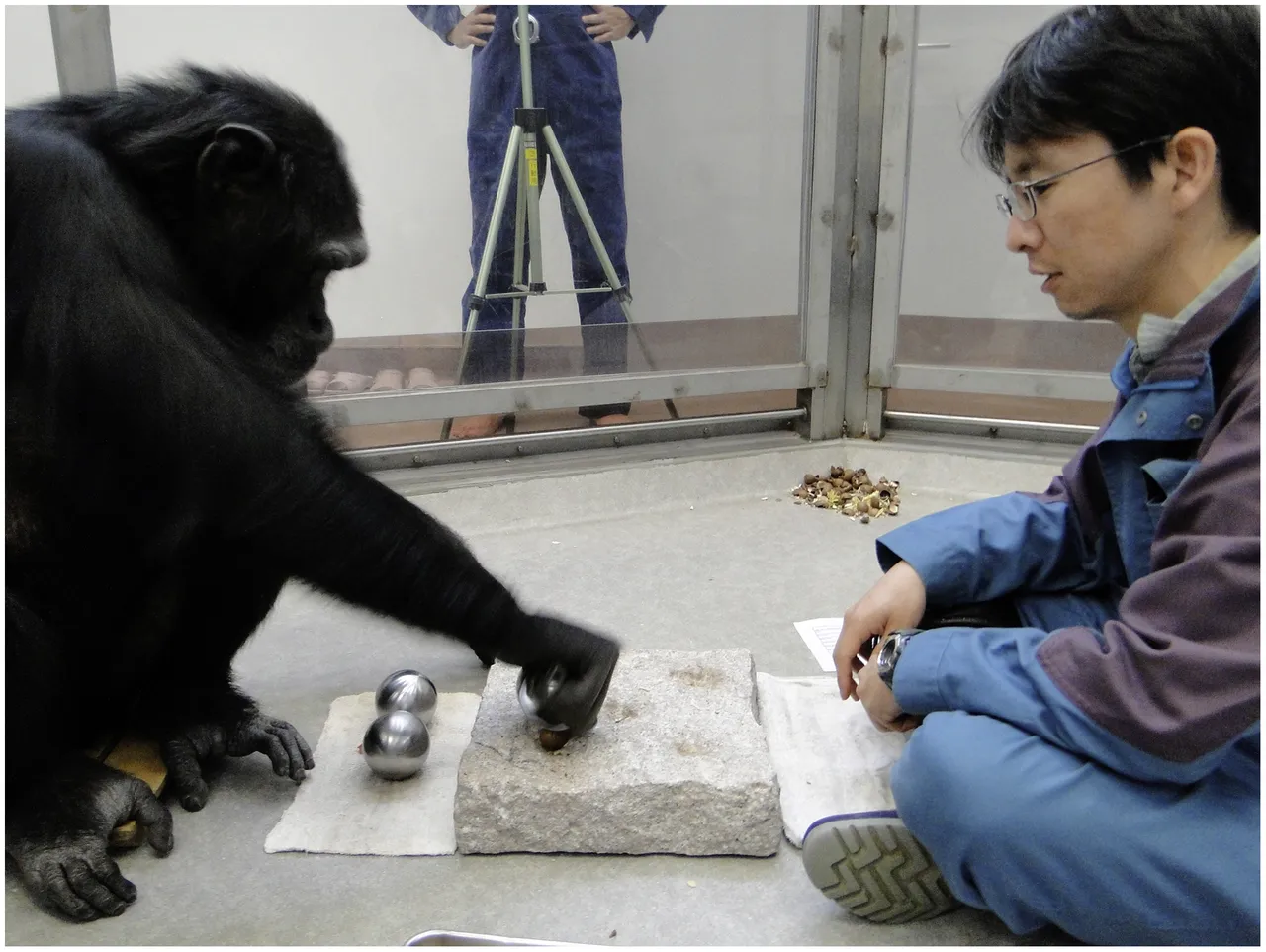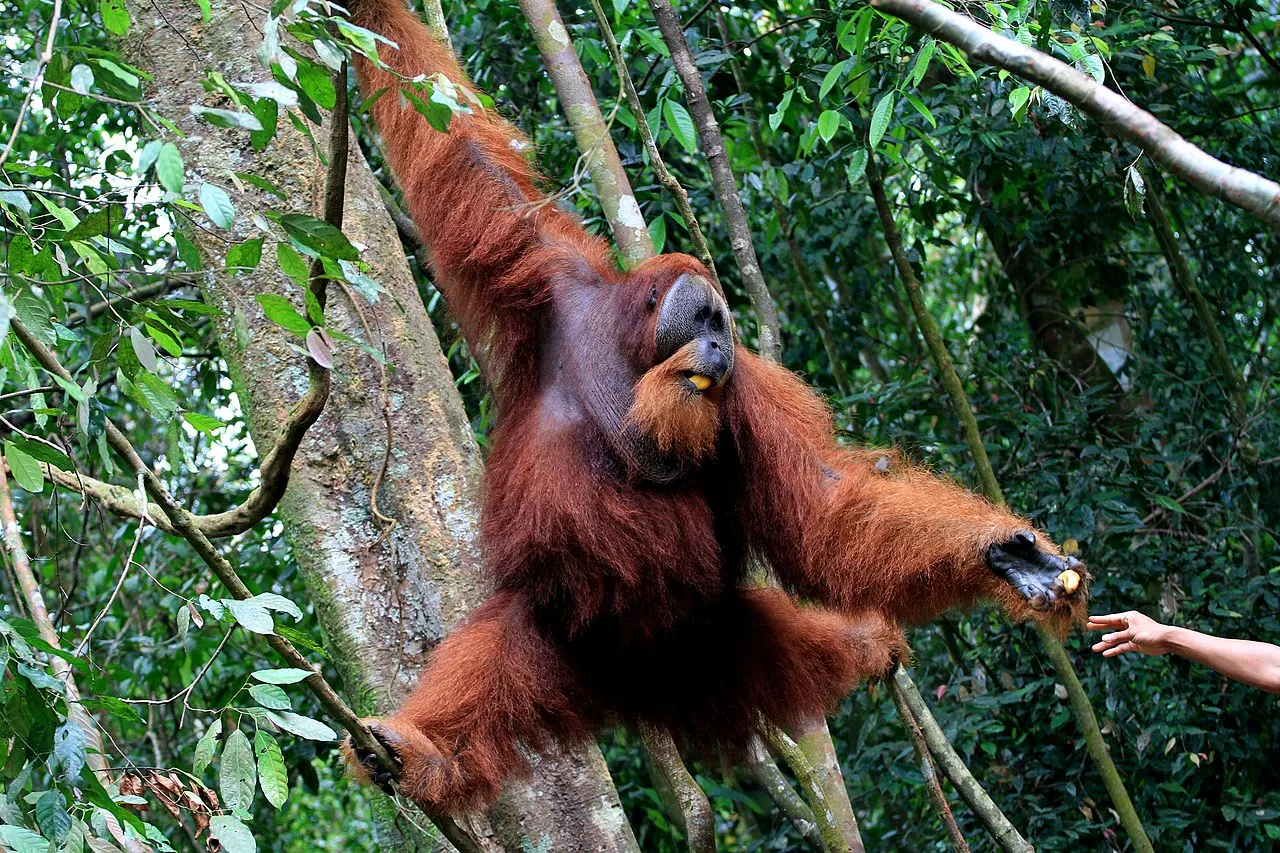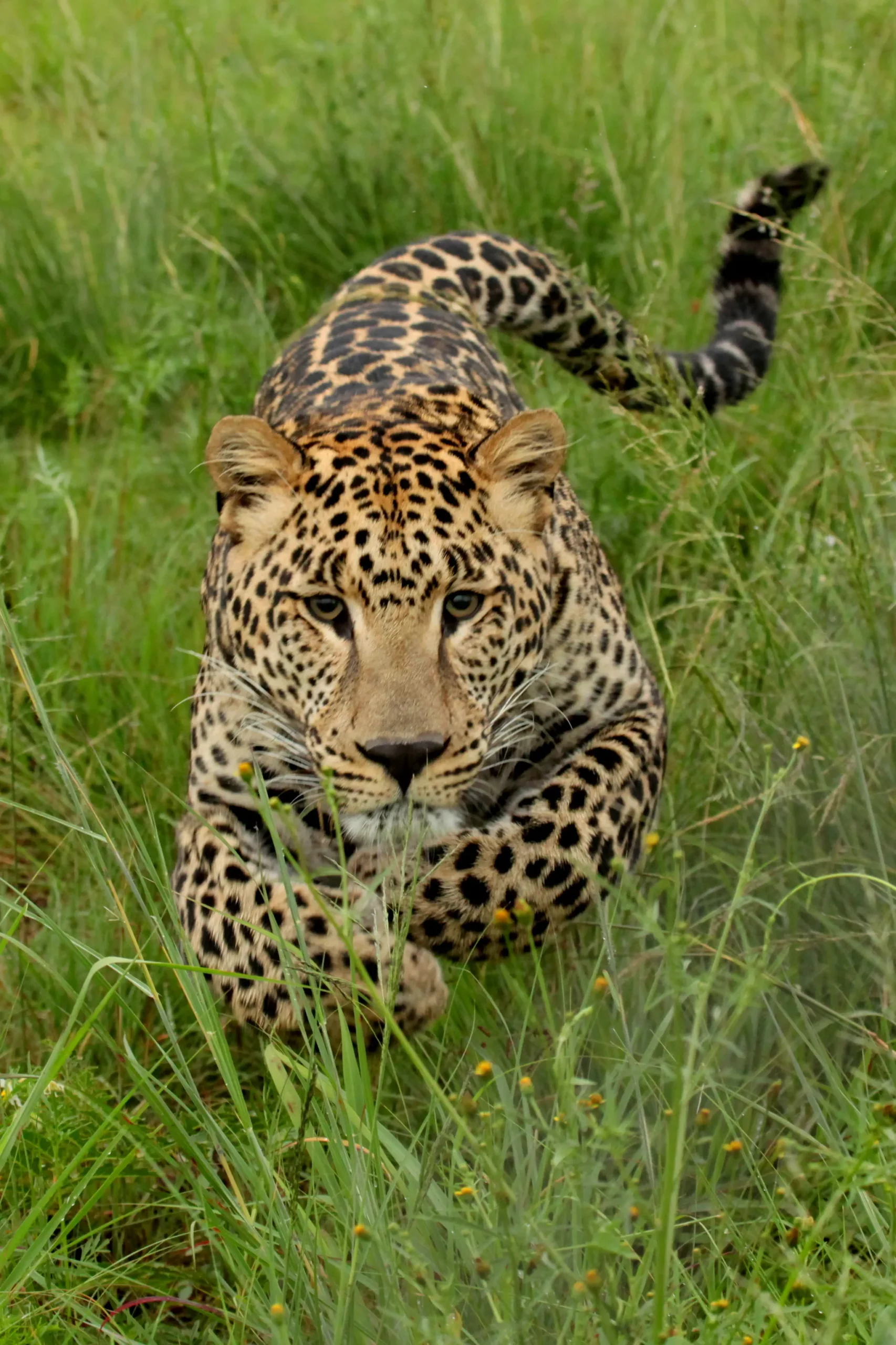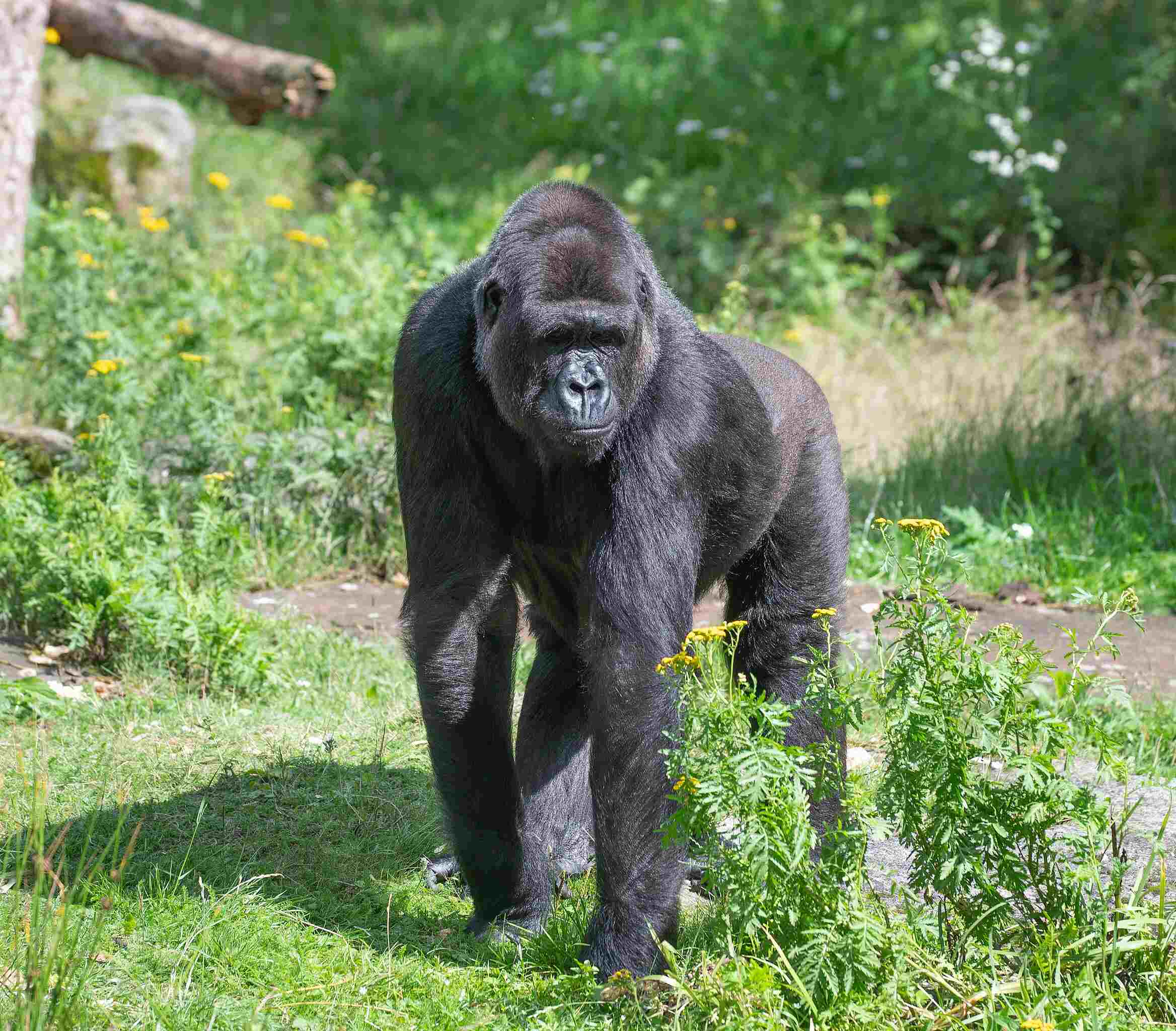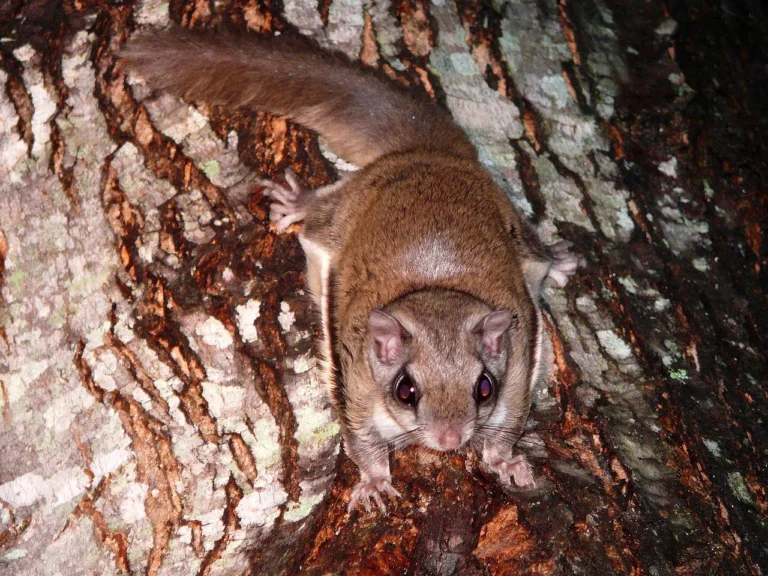Gorilla Vs Chimpanzee Size, Weight, Overall Comparison
Gorillas and chimpanzees, both belonging to the great ape family, exhibit intriguing differences in biological and physical traits. While gorillas embody strength and thrive in dense forests, chimpanzees, with their distinct characteristics, navigate diverse habitats. This comparison delves into various factors, including taxonomy, appearance, size, weight, and physical advantages, to explore the potential outcome of a confrontation between a gorilla and a chimpanzee.
Gorilla vs Chimpanzee: Who Will Win in a Fight/Physical Confrontation?
In a one-on-one confrontation, a lone gorilla is likely to overpower a solitary chimpanzee due to its larger size, heavier weight, and greater strength.
Why a Gorilla Will Win a Single Chimpanzee in a Fight/Physical Confrontation:
I). Size Advantage:
– Gorillas, being larger than chimpanzees, establish a significant advantage in one-on-one confrontations, showcasing their dominance through sheer size.
II). Weight Advantage:
– Gorillas carry more weight than chimpanzees, contributing to their physical prowess and enhancing their ability to overpower opponents.
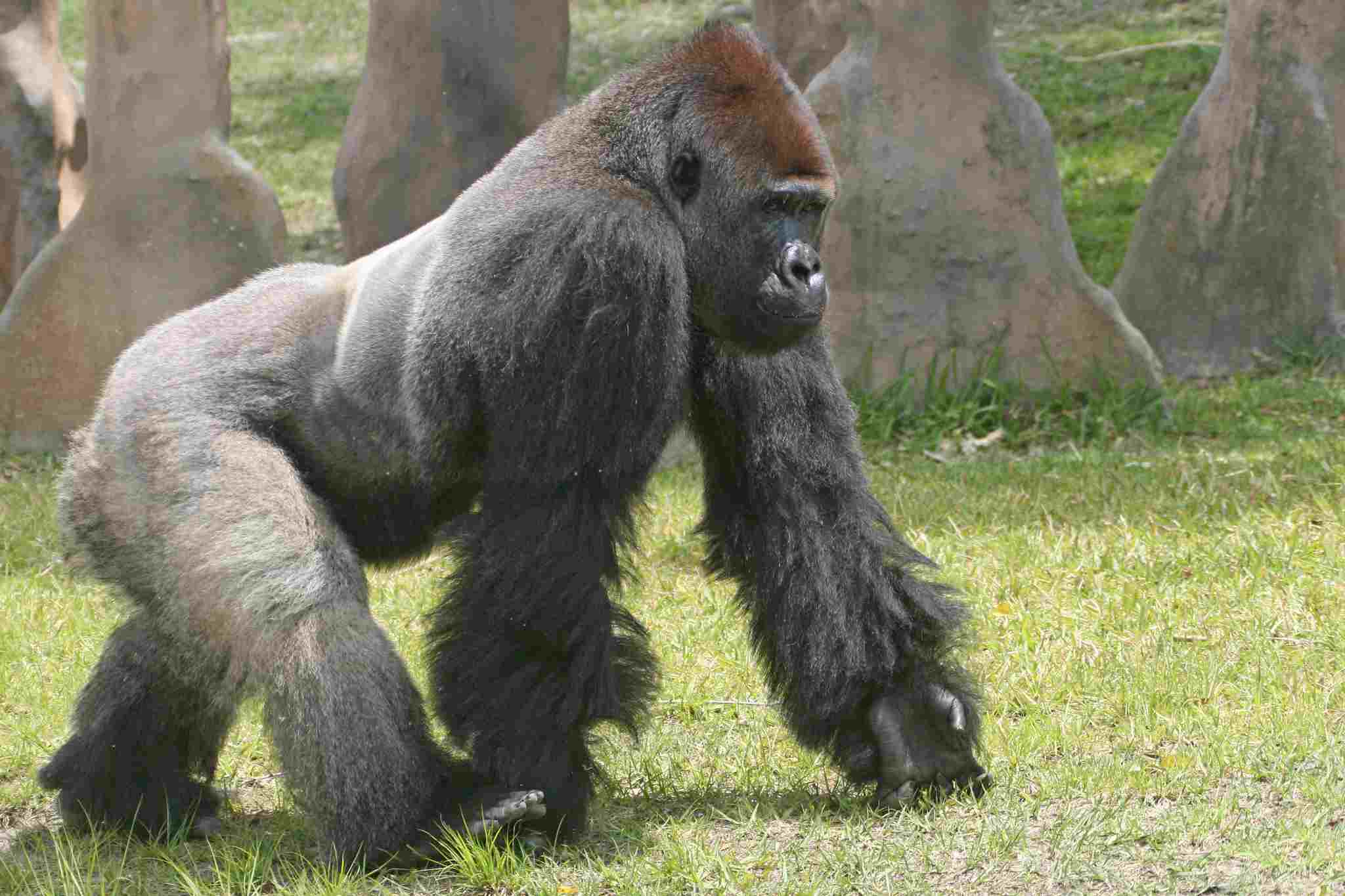
III). Strength Advantage:
– The sheer strength of gorillas surpasses that of chimpanzees, providing them with the necessary physical power to dominate in confrontational scenarios.
Therefore, when considering a one-on-one physical confrontation between a gorilla and a chimpanzee, the larger size, greater weight, and superior strength of the gorilla give it the upper hand. This comparison highlights the distinctive attributes within the great ape family, emphasizing the importance of size and strength in determining potential outcomes in wildlife encounters.
*Details of Comparison
| Aspect | Gorilla | Chimpanzee |
| Taxonomy | Family: Hominidae Genus: Gorilla |
Family: Hominidae Genus: Pan
|
| Species: G. beringei, G. gorilla |
Species: P. troglodytes, P. paniscus
|
|
| Appearance | Robust, coarse black hair |
Slender, variable hair color (black to brown)
|
| Size | Larger, males up to 5.6 ft |
Smaller, males 3.3 to 5.6 ft
|
| Weight | Heavier, males 300-400 lbs |
Lighter, males 90-130 lbs
|
| Bite Force | Powerful, adapted for vegetation |
Strong, versatile for fruits and insects
|
| Physical Offensive | Dominant strength |
Agile, tactical physical interactions
|
| Physical Defensive | Formidable size |
Agility, group defense against predators
|
| Speed | Relatively slow |
Faster, both on ground and in trees
|
| Agility | Limited |
Highly agile, excellent climbers
|
| Overall Physical | Impressive strength, herbivorous diet |
Agile, adaptable, omnivorous diet
|
| Habitat Preference | Dense forests |
Adaptable (rainforests, savannas, woodlands)
|
| Tracks | Broad footprints, terrestrial |
Smaller footprints, arboreal and terrestrial
|
| Lifespan | Longer, up to 35-40 years |
Shorter, around 40-50 years
|
| Mode of Feeding | Herbivorous | Omnivorous |
| Social Behavior | Cohesive family groups |
Larger communities, complex social structure
|
| Mode of Reproduction | Low reproductive rate |
Higher reproductive rate
|
| Parental Behavior | Strong maternal care |
Active involvement of both parents
|
| Proximity to Humans | Avoids human settlements |
Adaptable, may enter human-impacted areas
|
| Behavior Toward Humans | Non-aggressive, rare aggression |
Varied responses, curiosity to aggression
|
| Danger Posed to Humans | Generally low risk |
Variable risk, higher caution required
|
| Precautions | Maintain distance, avoid stress |
Caution, avoid direct eye contact and sudden movements
|
| Conservation Status | Endangered or Critically Endangered | Endangered |
1. Taxonomy:
Gorilla:
Family: Hominidae
Genus: Gorilla
Species: Gorilla beringei (Eastern Gorilla), Gorilla gorilla (Western Gorilla)
Chimpanzee:
Family: Hominidae
Genus: Pan
Species: Pan troglodytes (Common Chimpanzee), Pan paniscus (Bonobo)
2. Appearance:
Gorilla:
Robust build, broad chest
Coarse, black hair
Sagittal crest (prominent ridge on the skull)
Chimpanzee:
Slender build, longer limbs
Lighter hair, can vary from black to brown
No sagittal crest
3. Size:
Gorilla:
Larger size, especially males
Adult males can reach heights of 5.6 feet (1.7 meters)
Chimpanzee:
Smaller size overall
Adult males typically stand around 3.3 to 5.6 feet (1 to 1.7 meters)
4. Weight:
Gorilla:
Heavier in general
Adult males can weigh between 300 to 400 pounds (136 to 181 kilograms)
Chimpanzee:
Lighter in comparison
Adult males usually weigh around 90 to 130 pounds (41 to 59 kilograms)
Ecological Implications:
Gorillas’ larger size may influence their role in seed dispersal, potentially impacting plant regeneration differently than chimpanzees.
Size differences may affect energy requirements, with gorillas needing more resources to sustain their larger bodies compared to chimpanzees.
5. Bite Force:
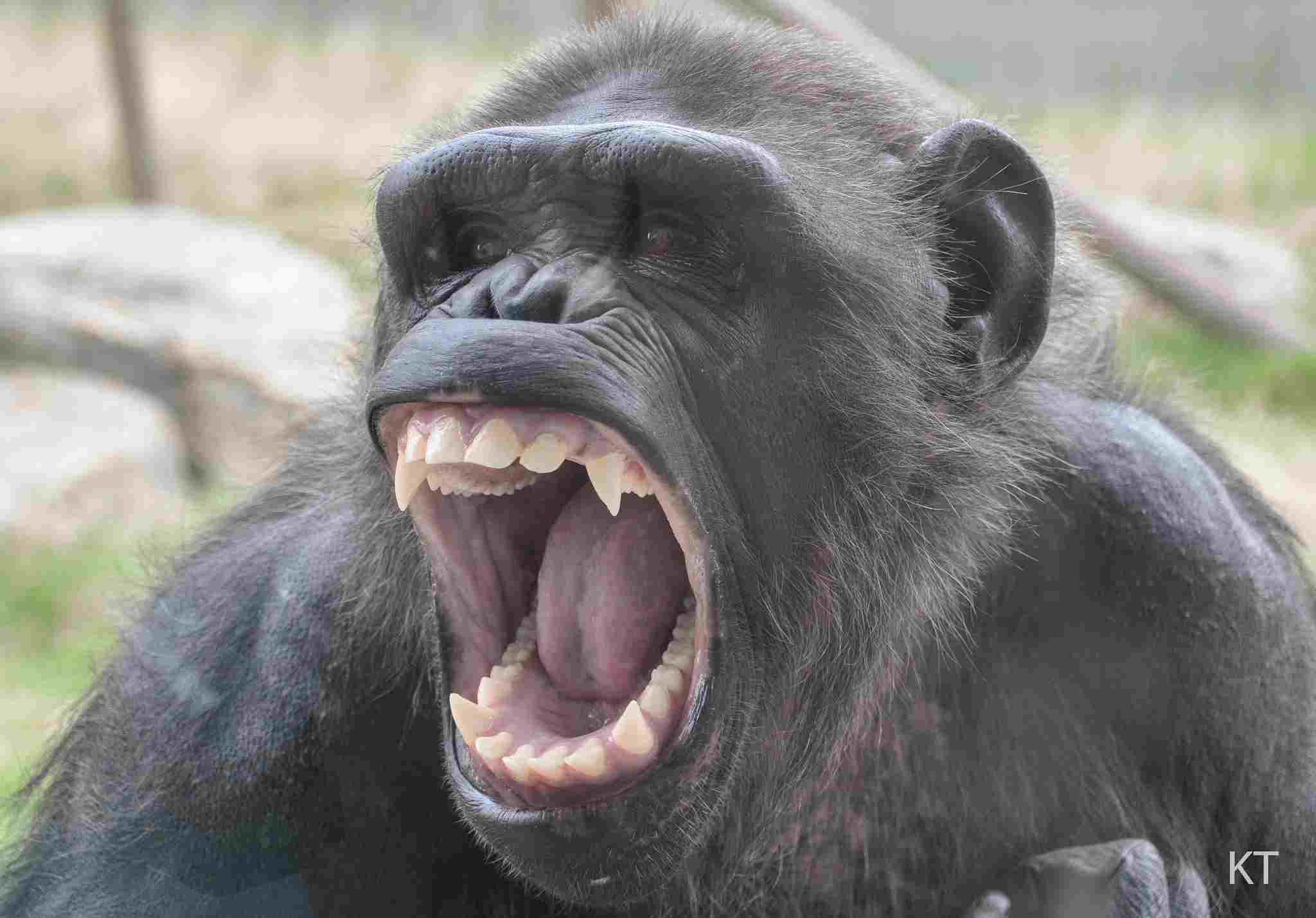
Gorilla:
Powerful bite force
Adapted for crushing vegetation and tough plant material
Chimpanzee:
Strong bite but not as powerful as gorillas
More versatile diet, including fruits and insects
6. Physical Offensive Advantages:
Gorilla:
Dominant physical strength
Can intimidate potential threats through displays of power
Chimpanzee:
Agile and quick, with a tendency for more tactical physical interactions
Use of tools enhances offensive capabilities
7. Physical Defensive Advantages:
Gorilla:
Formidable size and strength serve as a deterrent
Can use physical presence to discourage predators
Chimpanzee:
Agility allows for quick evasion and climbing
Group dynamics contribute to collective defense against predators
Ecological Implications:
Gorillas’ strong bite force and offensive strength may influence their impact on vegetation and potential competition with other herbivores.
Chimpanzees’ agility and defensive tactics contribute to their adaptability in diverse environments, potentially affecting their interactions with predators and competitors.
8. Speed:
Gorilla:
Relatively slow and deliberate movement
Primarily terrestrial, occasional knuckle-walking
Chimpanzee:
Faster and more agile, both on the ground and in trees
Frequent use of knuckle-walking and brachiation
9. Agility:
Gorilla:
Limited agility compared to chimpanzees
Climbing skills adapted to low branches
Chimpanzee:
Highly agile, excellent climbers
Adapted for traversing trees with ease
10. Overall Physical Capacity:
Gorilla:
Impressive strength and endurance
Suited for a herbivorous diet and sustained terrestrial movement
Chimpanzee:
Agile and adaptable
Omnivorous diet, allowing for diverse foraging strategies
Ecological Implications:
Gorillas’ slower speed and limited agility may impact their foraging efficiency and ability to navigate challenging terrain.
Chimpanzees’ agility and speed contribute to a broader range of foraging opportunities, potentially influencing their ecological niche and resource utilization.
11. Habitat Preference(s):
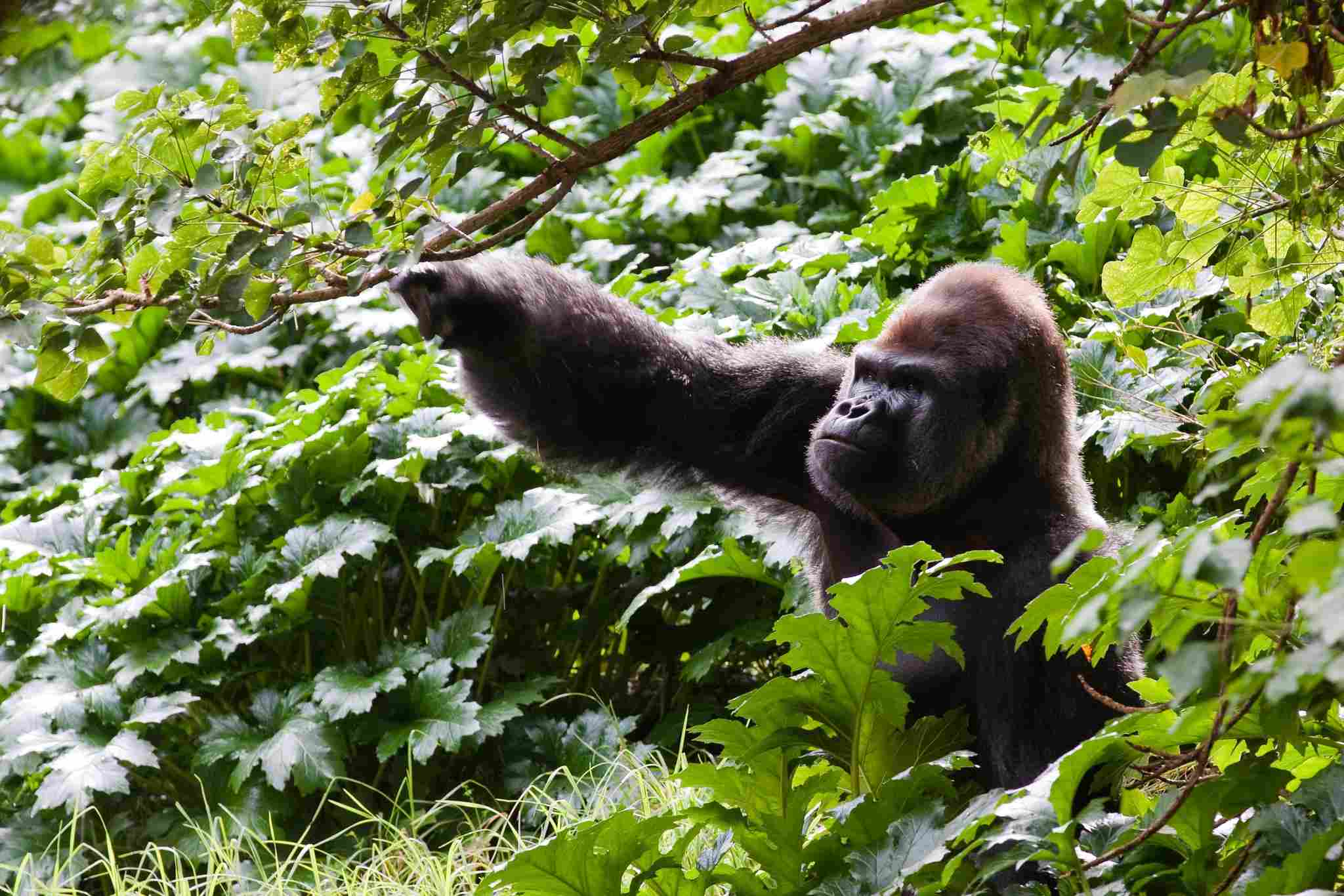
Gorilla:
Primarily inhabit dense forests
Prefer montane and lowland rainforests
Chimpanzee:
Highly adaptable to various habitats
Found in rainforests, savannas, and woodlands
12. Tracks:
Gorilla:
Broad footprints with distinct toe impressions
Reflective of their terrestrial lifestyle
Chimpanzee:
Smaller footprints with flexible toes
Indicate both terrestrial and arboreal movement
13. Lifespan:
Gorilla:
Longer lifespan
Can live up to 35–40 years or more in the wild
Chimpanzee:
Shorter lifespan compared to gorillas
Typically live around 40–50 years in the wild
Ecological Implications:
Gorillas’ preference for dense forests influences their impact on these ecosystems, potentially shaping plant diversity and distribution.
Chimpanzees’ adaptability to different habitats may make them more resilient to environmental changes but could also lead to varied ecological impacts across different regions.
14. Mode of Feeding:
Gorilla:
Primarily herbivorous
Diet consists of leaves, stems, fruits, and occasional insects
Chimpanzee:
Omnivorous
Diet includes fruits, leaves, insects, and sometimes small mammals
15. Social Behavior:
Gorilla:
Live in cohesive family groups (troops)
Dominated by a single adult male (silverback)
Chimpanzee:
Highly social and form large communities
More complex social structure with alliances and hierarchies
16. Mode of Reproduction:
Gorilla:
Low reproductive rate
Females have relatively long interbirth intervals
Chimpanzee:
Higher reproductive rate
Shorter interbirth intervals compared to gorillas
Ecological Implications:
Gorillas’ herbivorous diet contributes to seed dispersal and influences plant regeneration in their habitats.
Chimpanzees’ omnivorous nature and complex social behavior may impact a broader range of species through their foraging and social interactions.
17. Parental Behavior:
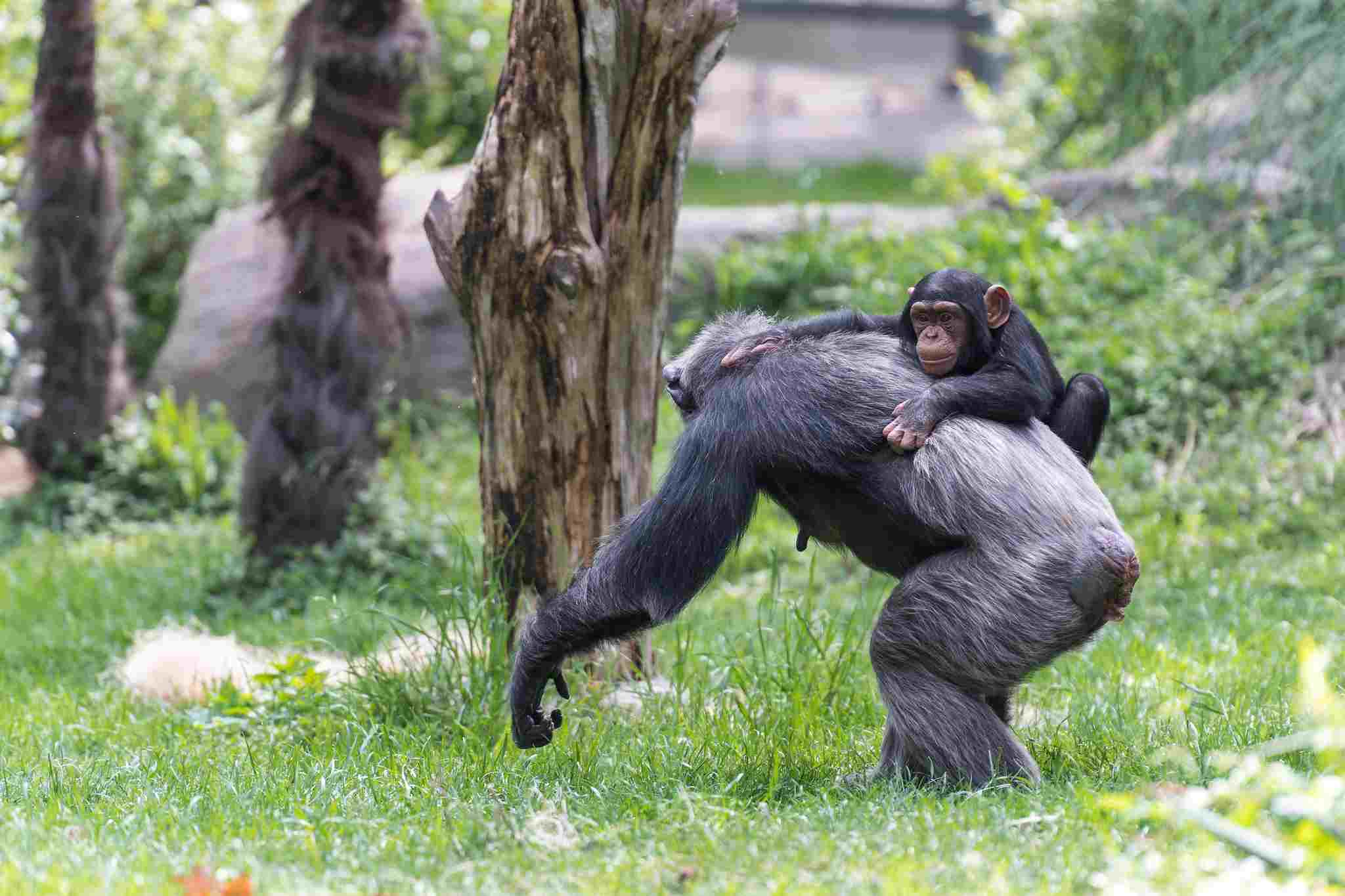
Gorilla:
Strong maternal care
Offspring stay with the mother for an extended period
Chimpanzee:
Active involvement of both parents
Infants are carried and cared for by their mothers and occasionally by other group members
18. Proximity to Human-Inhabited Areas:
Gorilla:
Generally avoid human-inhabited areas
Shy and less likely to approach human settlements
Chimpanzee:
More adaptable to human-impacted landscapes
May enter cultivated areas in search of food
19. Behavior Toward Humans:
Gorilla:
Typically avoid direct confrontation with humans
Rare instances of aggression, usually defensive in nature
Chimpanzee:
Varied responses, ranging from curiosity to aggression
May display territorial behavior or approach humans for food
Ecological Implications:
Gorillas’ avoidance of human settlements may contribute to their conservation by minimizing potential conflicts.
Chimpanzees’ adaptability to human-altered landscapes may expose them to increased risks, including habitat degradation and conflicts with humans.
20. Danger Posed to Humans:
Gorilla:
Generally considered non-aggressive towards humans
Rare cases of aggression, often provoked or defensive in nature
Chimpanzee:
Can pose a higher risk, especially in specific situations
Instances of aggressive behavior, particularly if they feel threatened or if food is involved
21. Associated Precautions:
Gorilla:
Caution advised but direct interactions are usually peaceful
Maintain a safe distance to avoid potential stress for gorillas
Chimpanzee:
Greater caution required, especially in the wild
Avoid direct eye contact and sudden movements; respect their space
22. Conservation Status:
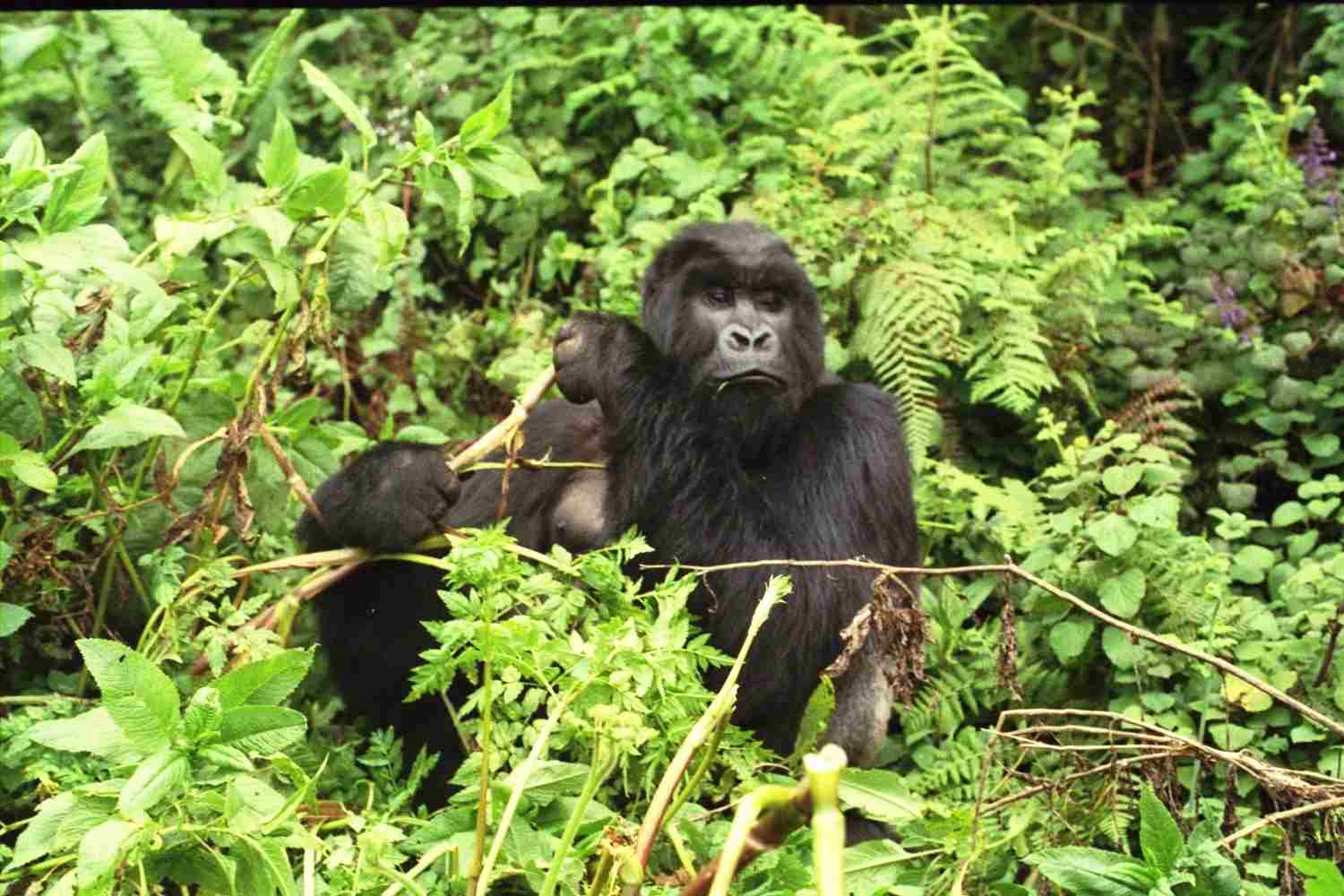
Gorilla:
Varied conservation statuses based on species
Western Gorilla (Gorilla gorilla): Endangered
Eastern Gorilla (Gorilla beringei): Endangered or Critically Endangered
Chimpanzee:
Common Chimpanzee (Pan troglodytes): Endangered
Bonobo (Pan paniscus): Endangered
*Ecological Importance and Roles of Gorillas
Seed Dispersal:
Gorillas, with their herbivorous diet, play a crucial role in seed dispersal.
Their consumption of fruits and vegetation contributes to the distribution of seeds across the forest.
Vegetation Impact:
Grazing on leaves, stems, and other plant materials, gorillas influence vegetation structure and composition.
Their browsing habits can shape plant diversity in their habitats.
Ecosystem Engineers:
Gorillas, through their foraging and movement patterns, act as unintentional ecosystem engineers.
They may create clearings or paths in dense forests, impacting the overall ecosystem structure.
Cohesive Family Structure:
The silverback-led family groups contribute to social stability within the gorilla community.
This stable structure may indirectly influence the behavior of other species within the ecosystem.
*Ecological Roles and Importance: Chimpanzee
Versatile Foraging:
Chimpanzees, as omnivores, engage in versatile foraging, including fruits, leaves, insects, and occasional hunting.
Their diverse diet allows them to exploit a wide range of resources, influencing multiple trophic levels.
Impact on Insect Populations:
Chimpanzees’ insect-eating behavior may regulate insect populations, affecting the abundance of certain species.
This could have cascading effects on other organisms in the ecosystem.
Habitat Adaptability:
Chimpanzees’ ability to adapt to various habitats, including rainforests, savannas, and woodlands, makes them resilient to environmental changes.
Their adaptability may influence the dynamics of different ecosystems.
Complex Social Structure:
The complex social structure of chimpanzee communities involves alliances, cooperation, and hierarchical relationships.
Social dynamics may influence patterns of resource use and interactions with other species.
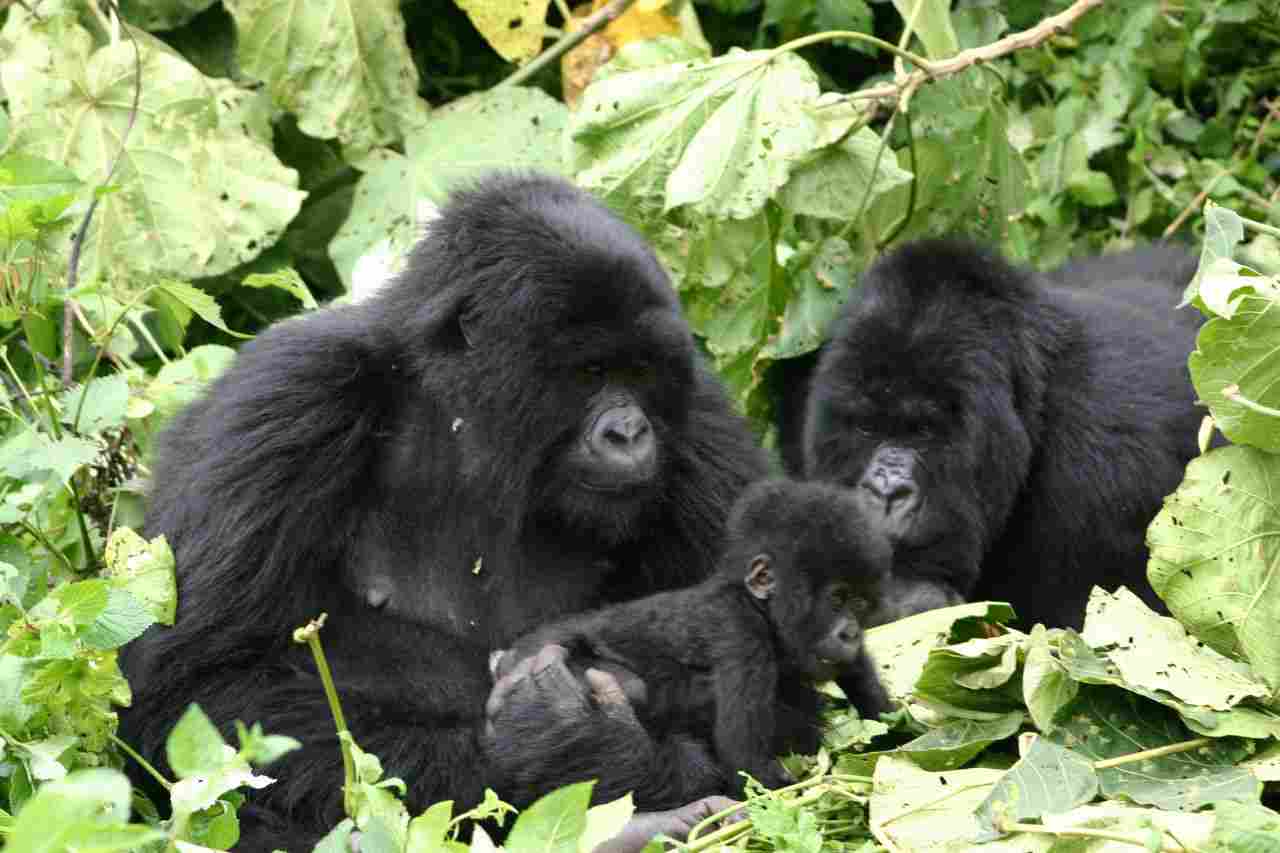
Overall Ecological Significance:
Both gorillas and chimpanzees are keystone species, exerting significant influence on their respective ecosystems.
Their presence contributes to biodiversity, nutrient cycling, and ecosystem resilience, making them integral components of their habitats.
*Summary of Comparison
Taxonomy:
Gorillas: Family Hominidae, Genus Gorilla, Species G. beringei, G. gorilla
Chimpanzees: Family Hominidae, Genus Pan, Species P. troglodytes, P. paniscus
Physical Characteristics:
Gorillas: Larger, robust build, herbivorous
Chimpanzees: Smaller, agile, omnivorous
Behavior and Social Structure:
Gorillas: Simpler family groups led by a silverback, emphasis on strength
Chimpanzees: Complex communities, intricate social hierarchies, versatile interactions
Habitat Preferences:
Gorillas: Prefer dense forests, avoid human settlements
Chimpanzees: Adaptable to various habitats, may enter human-impacted areas
Ecological Roles:
Gorillas: Seed dispersal, vegetation impact, unintentional ecosystem engineering
Chimpanzees: Versatile foraging, impact on insect populations, habitat adaptability
Conservation Status:
Gorillas: Endangered or Critically Endangered
Chimpanzees: Endangered
Ecological Significance:
Gorillas: Contribute to seed dispersal, impact vegetation structure, stable family structure
Chimpanzees: Versatile foraging influences multiple trophic levels, adaptable to various habitats, complex social structure
Conclusion
I). Similarities:
Both gorillas and chimpanzees share a common ancestry within the Hominidae family, making them our closest living relatives among non-human primates.
These primates play vital roles in their ecosystems, influencing vegetation, seed dispersal, and maintaining biodiversity.
II). Differences:
Gorillas are generally larger, with a more herbivorous diet, adapted for a terrestrial lifestyle, and exhibit a simpler social structure with a dominant silverback.
Chimpanzees, in contrast, are smaller, omnivorous, highly agile, and socially complex, forming larger communities with intricate relationships and cooperation.
